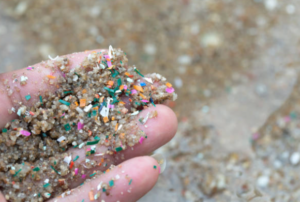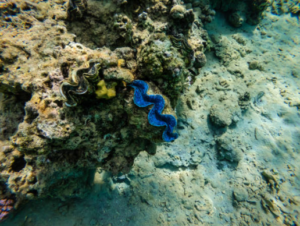Microplastics and Beyond

In the ever-evolving world of beauty and personal care, the pursuit of effective products often involves extensive testing. Unfortunately, a significant portion of these tests historically involved animal experimentation. While the beauty industry has made strides towards cruelty-free practices, there remains a hidden environmental cost that often goes unnoticed – the impact of personal care animal testing on marine life. In this comprehensive blog, we will explore the various facets of this issue, focusing on the role of microplastics, the environmental consequences, and the industry’s shift towards cruelty-free alternatives.
The historical reliance on animal testing within the beauty and personal care industry has been a controversial and often overlooked aspect of product development. To grasp the extent of the issue, it’s essential to delve into the methodologies and practices that were once commonplace.
- Tested on Whom? The Use of Animals in Experiments:
- Traditionally, a range of animals, including rabbits, mice, rats, and guinea pigs, were subjected to various tests to evaluate the safety, potential irritancy, and efficacy of personal care products. These tests involved applying products to the skin or fur of animals and observing the reactions over a designated period.
- The Draize test, for instance, involved applying substances to the eyes or skin of animals, typically rabbits, to assess potential irritation or damage. Similarly, the LD50 test measured the lethal dose of a substance required to cause death in 50% of a group of animals.
- Long-Term Effects and Ethical Concerns:
- Animal testing raised numerous ethical concerns, particularly as these tests could involve significant suffering and potential harm to the animals involved. The use of animals in cosmetic testing has been widely criticized for its inhumane nature, and public awareness and outcry have been pivotal in driving changes in industry practices.
- Long-term exposure studies, which often lasted weeks or even months, aimed to understand the prolonged effects of personal care products. This not only subjected animals to extended periods of potential discomfort but also raised questions about the extrapolation of results to human reactions.
- The Drive Towards Cruelty-Free Alternatives:
- Recognizing the ethical concerns and with an increasing societal shift towards cruelty-free practices, the beauty industry has been compelled to explore alternatives to animal testing. This has led to the development of innovative testing methods that do not involve live animals.
- In vitro testing, for example, utilizes cultured cells to assess the safety and efficacy of products. These cell-based tests can provide accurate and reliable results without the need for animal involvement. Additionally, advanced technologies, such as artificial skin models, offer a closer approximation of human skin responses.
- Global Regulations and Bans:
- Acknowledging the ethical concerns and the advancement of alternative testing methods, various countries and regions have implemented regulations aimed at reducing or eliminating animal testing in the beauty and personal care industry.
- The European Union, for instance, banned the testing of finished cosmetic products on animals in 2004 and extended this ban to include the testing of cosmetic ingredients in 2013. Similar measures have been adopted in other regions, contributing to a global movement towards cruelty-free practices.
- Challenges and Progress:
- Despite the progress made, challenges persist in fully replacing animal testing. Some complex reactions and interactions cannot be accurately replicated outside a living organism, presenting obstacles in certain areas of research.
- However, the beauty industry’s commitment to innovation and ethical practices has fueled ongoing research into alternative testing methods. Collaborations between scientists, researchers, and ethical organizations aim to bridge the gap and develop more advanced, cruelty-free testing approaches.
The Role of Microplastics
Microplastics, defined as plastic particles less than five millimeters in size, have become a pervasive and concerning environmental issue. While the beauty and personal care industry is not the sole contributor to the microplastics problem, the release of these particles during personal care animal testing procedures plays a significant role in contaminating aquatic ecosystems.
- Sources of Microplastics in Personal Care Products:
- Microplastics in personal care products are often intentionally added for their exfoliating or texturizing properties. These microbeads, as they are commonly known, were once prevalent in facial scrubs, body washes, and toothpaste. When these products were applied during animal testing, the microplastics were released into the water as the products were rinsed off the animals.
- The use of microbeads in personal care products has, however, faced substantial scrutiny and regulatory restrictions. Many countries have banned or limited the use of microbeads in cosmetic and personal care products to curb their environmental impact.
- Rinsing Away Contamination:
- During animal testing, particularly when assessing the effects of a product on the skin or fur, the final step involves rinsing off the applied product. This rinsing process, often conducted in a controlled environment to collect and analyze runoff, allows for the release of microplastics into wastewater.
- The collected wastewater, which contains these microplastics, may then be discharged into sewage systems, contributing to the wider distribution of these particles into rivers, lakes, and ultimately the oceans.
- Transport Through Sewage Systems:
- Once released into wastewater during animal testing procedures, microplastics are carried through sewage systems, eventually making their way into natural water bodies. This transport pathway highlights the interconnectedness between personal care practices, animal testing, and the broader environmental impact on aquatic ecosystems.
- Wastewater treatment facilities are not always equipped to effectively capture and remove microplastics, allowing a portion of these particles to enter the environment despite treatment efforts.
- Environmental Persistence:
- Microplastics have the potential to persist in the environment for extended periods due to their resistance to degradation. Once introduced into aquatic ecosystems, they can accumulate in sediments or be ingested by marine organisms.
- The longevity of microplastics in the environment raises concerns about their continuous impact on marine life, creating a cycle of pollution that can have cascading effects on ecosystems over time.
- Impact on Marine Life:
- The introduction of microplastics into aquatic ecosystems poses a direct threat to marine life. Small marine organisms, including plankton, are particularly vulnerable as they can mistake microplastics for food, leading to ingestion.
- Ingested microplastics can cause physical harm to marine organisms, leading to internal injuries, blockages, and malnutrition. The potential for ingestion spans the entire marine food chain, impacting species at various trophic levels.
- Bioaccumulation and Biomagnification:
- Once ingested, microplastics can accumulate in the tissues of marine organisms. This process, known as bioaccumulation, can lead to higher concentrations of microplastics in the bodies of animals higher up the food chain.
- The phenomenon of biomagnification further exacerbates the issue, as predators at the top of the food chain may accumulate higher levels of microplastics due to the ingestion of contaminated prey.
- Chemical Contamination:
- Microplastics have the ability to absorb and concentrate pollutants present in the water. As a result, marine life that ingests these particles may also be exposed to harmful chemicals, further compromising their health and the health of those higher up the food chain.

The Environmental Consequences
- Marine Species Ingestion:
- Microplastics pose a direct threat to marine life as they are frequently mistaken for food by various species. From plankton to larger marine animals, ingestion of these particles can lead to digestive issues, malnutrition, and, in some cases, death.
- Bioaccumulation and Biomagnification:
- Once ingested by marine organisms, microplastics can accumulate in their tissues. This process of bioaccumulation can lead to a higher concentration of these particles in the bodies of animals higher up the food chain, a phenomenon known as biomagnification. This poses risks not only to individual organisms but also to entire ecosystems.
- Chemical Contamination:
- Microplastics have the ability to absorb and concentrate pollutants present in the water. As a result, marine life that ingests these particles may also be exposed to harmful chemicals, further compromising their health and the health of those higher up the food chain.

Industry Shift Towards Cruelty-Free Alternatives
In recent years, there has been a growing global awareness of the ethical implications of animal testing in the beauty and personal care industry. Many countries have implemented or are in the process of implementing regulations that restrict or ban animal testing for cosmetic products. This shift has prompted companies to explore alternative testing methods, such as in vitro testing and the use of artificial skin models.
Advances in technology have led to the development of artificial skin models that closely mimic human skin. These models provide a more accurate representation of how a product may react on human skin without the need for animal testing.
As consumers, we have the power to drive change through our choices and advocacy. Here are ways you can contribute to the reduction of personal care animal testing and its impact on marine life:
- Choose Cruelty-Free Products:
- Opt for beauty and personal care products that are certified cruelty-free by reputable organizations. Look for logos such as the Leaping Bunny or PETA’s cruelty-free certification, which indicate that the product and its ingredients were not tested on animals.
- Support Sustainable Brands:
- Choose brands that are committed not only to cruelty-free practices but also to sustainable and environmentally friendly initiatives. Companies that prioritize ethical sourcing, minimal packaging, and environmentally conscious manufacturing contribute to a healthier planet.
- Stay Informed:
- Stay informed about the policies and practices of your favorite brands. Be aware of any changes in their stance on animal testing and their commitment to sustainability. By supporting transparent and responsible brands, you contribute to a market shift towards ethical practices.
- Advocate for Change:
- Use your voice to advocate for stricter regulations against personal care animal testing. Support petitions and initiatives aimed at encouraging governments and industry stakeholders to adopt cruelty-free alternatives.

The impact of personal care animal testing on marine life, particularly through the release of microplastics, is an environmental concern that demands attention and action. As the beauty industry undergoes a transformation towards cruelty-free practices, consumers play a pivotal role in driving change. By choosing cruelty-free and sustainable products, staying informed, and advocating for stricter regulations, we can contribute to a future where the pursuit of beauty aligns with compassion for animals and the preservation of our precious marine ecosystems. It’s time to make choices that not only enhance our beauty but also contribute to a healthier, more sustainable planet for generations to come.

